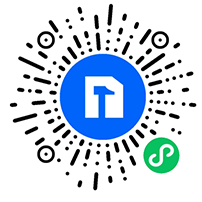
分享
定制


Certainly! Below is a concise table comparing design principles for mobile apps and desktop software:
| Design Principle | Mobile Apps | Desktop Software |
|--------------------------|------------------------------------------------------|----------------------------------------------------|
| Screen Size and Space | Limited screen real estate; prioritize essential content; use gestures. | Larger screen space; utilize multiple windows; consider mouse-driven interactions. |
| Navigation | Simplified navigation; prioritize key features; use tab bars or navigation drawers. | Hierarchical navigation; menu bars; context menus; keyboard shortcuts. |
| Interaction Patterns | Touch-based interactions; gestures (swiping, tapping); consider thumb-friendly design. | Mouse and keyboard interactions; right-click options; hover effects. |
| Responsive Design | Critical for various device sizes and orientations; adapt layouts dynamically. | More predictable screen sizes; still consider responsiveness for different monitor sizes. |
| Consistency | Platform-specific design guidelines (iOS Human Interface Guidelines, Material Design); maintain a consistent look and feel. | Follow OS-specific design principles (Windows UI, macOS Human Interface Guidelines); ensure consistency within the software. |
| Contextual Actions | Utilize context menus, long-press actions; consider context-aware features. | Right-click options; toolbar actions; consider context sensitivity. |
| Notifications | Limited space for notifications; use banners, badges; prioritize relevance. | Utilize system notifications; allow customization; consider non-intrusive options. |
| Input Methods | Touchscreen keyboard input; voice commands; consider limited text input. | Full keyboard input; mouse interactions; extensive text input support. |
| Offline Capability | Important due to mobile usage scenarios; provide offline modes when possible. | Generally less critical, but consider offline capabilities for specific use cases. |
| Performance | Optimize for lower processing power; consider bandwidth constraints. | Can leverage higher processing power; prioritize smooth performance. |
This table provides a brief overview of key design principles, acknowledging the distinctive considerations for mobile apps and desktop software. However, it's essential to note that design principles can evolve, and specific project requirements may influence design choices. Always refer to the latest design guidelines for the targeted platforms.

【使用錘子簡歷小程序制作簡歷】
零經驗實習簡歷模板
21254人用過
學生求職簡歷模板
52754人用過
申請研究生簡歷模板
2324人用過
經典工作簡歷模板
6254人用過
投行咨詢簡歷模板
12465人用過
產品經理簡歷模板
7532人用過
程序員簡歷模板
7457人用過
留學英文簡歷模板
4554人用過